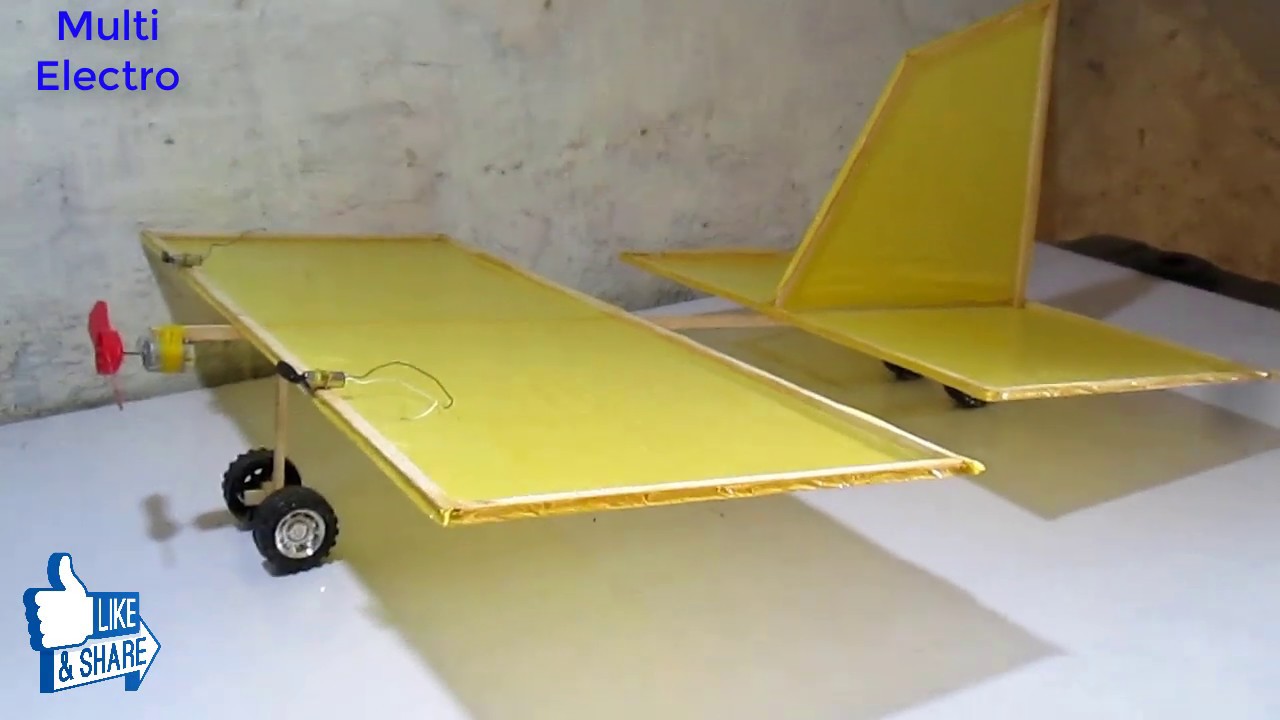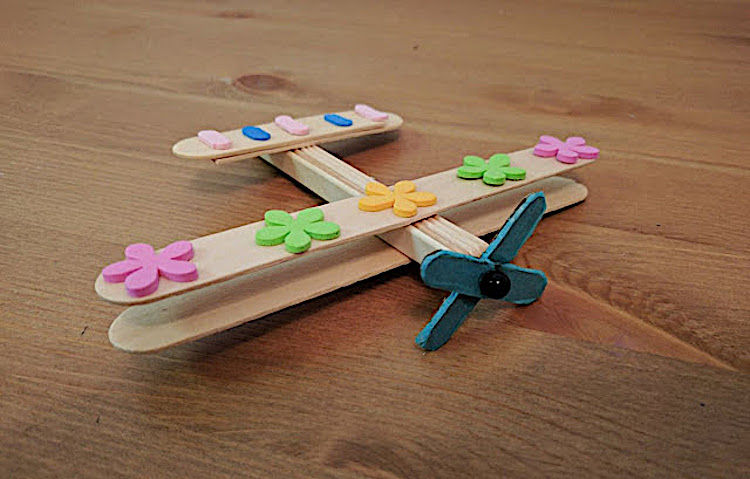Building an aeroplane at home is a thrilling venture that combines creativity, engineering, and a bit of adventure. Whether you’re an aviation enthusiast, a hobbyist, or just someone searching for a unique project, constructing your own model plane with a motor can be incredibly rewarding. In this guide, we'll walk you through the essentials, ensuring you have everything you need to soar into this exciting experience. So, strap in and let’s get started!
Materials Needed

Before you head to the workshop, it's crucial to gather all the necessary materials for your aeroplane project. Here's a comprehensive list of what you'll need:
- Wooden Planks or Foam Sheets: Depending on your design, choose lightweight materials like balsa wood or foam board for the body and wings.
- Motor: A small electric motor is essential for propelling your aeroplane. Look for a brushless motor that suits your model's weight and size.
- Battery: A rechargeable lithium-polymer battery (LiPo) is commonly used in model aeroplanes, providing enough juice for your flights.
- Propeller: The right propeller can make all the difference. Choose one that's compatible with your motor for optimal performance.
- Control Servos: These are necessary for your plane's control surfaces (like the ailerons and rudder) and are crucial for maneuverability.
- Receiver and Transmitter: A radio control system helps you pilot your aircraft from the ground. Opt for a reliable RC set.
- Adhesives: Strong glue or epoxy will be essential for building your framework and attaching parts securely.
- Tools: You’ll need a variety of tools such as a hobby knife, scissors, a ruler, and a soldering iron for assembling electronic components.
Having these materials ready will make your building process smooth and enjoyable. Each component plays a vital role in ensuring your aeroplane is not only functional but also capable of producing wonderful airborne adventures.
3. Step-by-Step Guide to Building the Aeroplane

Building an aeroplane at home might sound like a daunting task, but don't worry! With the right approach and a bit of patience, you can definitely make it happen. Here’s a step-by-step guide that will walk you through the entire process:
- Gather Materials: Start by collecting all the materials you will need. You will require:
- Plywood or balsa wood for the fuselage and wings
- Lightweight plastic or foam for the body
- A small electric motor
- Wheels (can be bought or made from wood)
- Propeller (sized according to your motor)
- Glue (strong adhesive suitable for wood and foam)
- Paint or varnish (optional for aesthetics)
- Tools (saw, drill, glue gun, scissors, etc.)
4. Assembling the Motor and Wing Mechanism
Now that you’ve got the basic structure of your aeroplane set up, it’s crucial to focus on one of the most important components: the motor and wing mechanism. This part is essential for your plane to achieve flight, so let's break it down step-by-step.
- Choosing the Right Motor: Select a small, lightweight electric motor suitable for your aircraft’s size. Ensure it’s powerful enough to lift the weight of the plane.
- Preparing the Motor: If your motor doesn’t come with mounts, you might need to create one. Use lightweight materials like balsa wood to fashion an effective mount that will hold the motor securely in place.
- Mounting the Motor: Install your motor at the front of the fuselage. It should be securely fastened with screws or glue, ensuring it’s aligned perfectly with the propeller.
- Connecting the Propeller: Attach the appropriate propeller to the motor shaft. Make sure it’s fixed tightly to prevent any mishaps during flight.
- Wing Mechanism: If your design requires movable wings or ailerons, you’ll need to install servos that control those parts. Here’s a quick overview:
- Wiring: Carefully wire the motor and servos to the battery and remote control system. Ensure all connections are secure to avoid any failures.
- Test the Mechanism: Before your actual flight, manually test the motor and wing movements to ensure everything operates smoothly. Adjust as necessary.
| Component | Purpose |
|---|---|
| Servos | Control the movement of ailerons for better maneuverability. |
| Control Rods | Connect servos to ailerons, allowing for movement when commanded. |
As you assemble your motor and wing mechanism, take your time and pay attention to details. A well-assembled aeroplane will soar more effectively! Happy building!
5. Testing Your Aeroplane
Ah, the moment of truth! After all your hard work building your aeroplane, it's time to put it to the test. But hold up—before you launch it into the skies, there are a few key steps to follow to ensure everything goes smoothly. Here’s how to conduct a proper test of your homemade aircraft.
- Pre-flight Check: Begin by inspecting the entire build. Ensure all parts are securely attached, and there are no loose screws or components. Check the wings, motor, and propeller. A loose part can lead to disaster!
- Balance Test: A well-balanced plane is crucial for stable flight. You can do this by gently lifting the nose of the plane—if it tips too far in any direction, adjust the weight distribution until it’s balanced.
- Engine Tests: Before your maiden flight, make sure the motor is functioning properly. Run the motor briefly on the ground and listen for any unusual sounds. If anything seems off, troubleshoot the issue before proceeding.
- First Flight: Choose a calm day with minimal wind for your first test flight. A wide, open space is ideal. Launch the plane gently and pay close attention to how it behaves. Take notes on its performance—this can help guide any necessary adjustments.
- Post-flight Inspection: After your test flight, conduct a thorough examination of your aeroplane. Look for signs of wear or stress on any components and document how the plane flew to note any modifications needed for improvement.
Remember, testing is a process. Don’t be discouraged if things don’t go perfectly the first time! Each flight teaches you something new about your creation.
6. Safety Tips and Precautions
Flying your DIY aeroplane can be an exhilarating experience, but safety should always be at the forefront of your mind. Here are some essential safety tips and precautions to keep in mind before you take off:
- Protective Gear: Always wear eyewear and other protective gear when testing your aeroplane. While it might seem silly at first, the cut-off sounds of the motor and the unpredictability of flight are real safety issues.
- Clear Launch Area: Make sure your testing area is free of people, pets, and structures. It’s wise to have a designated space that is clear and open so you can avoid potential accidents.
- Know Your Model: Familiarize yourself with the specific characteristics of your aeroplane. Some models are more stable than others, and understanding your aircraft will help you anticipate its behavior during flight.
- Monitor Battery Life: If your aeroplane is motorized, keep an eye on the battery level. Running a motor on a low battery can lead to loss of control mid-flight.
- Have a Buddy System: If possible, test your aeroplane with a friend. Having someone else around can provide an extra layer of safety and assistance should issues arise during flight.
- Follow Legal Regulations: Finally, ensure you're aware of local regulations concerning flying model aircraft. Some areas have specific rules regarding airspace and safety guidelines. Always fly responsibly!
By taking these precautions, you can ensure that your flight experience is both thrilling and safe. So prep carefully and get ready for takeoff!
How to Build an Aeroplane with a Motor at Home
Building an aeroplane with a motor at home can be an exciting and educational project. Whether you're a hobbyist, an engineering enthusiast, or a parent looking to inspire your child’s interest in aviation, creating your own model aeroplane allows you to learn about aerodynamics, mechanics, and electronics. This guide explains the fundamental steps involved in constructing a basic motorized plane.
Materials Needed
- Body Frame: Balsa wood or foam board
- Wings: Lightweight plastic or balsa wood sheets
- Motor: Brushless electric motor
- Propeller: Suitable for the motor size
- Batteries: LiPo batteries (with charger)
- Controller: Electronic Speed Controller (ESC)
- Control Surfaces: Rudder, elevator, and ailerons
- Glue: Epoxy or hot glue gun
- Accessories: Receiver, servos for control surfaces
Building Steps
- Design your aeroplane using software or paper sketches. Consider dimensions according to your materials.
- Cut the body frame and wings using your chosen material. Ensure they are lightweight for better aerodynamics.
- Assemble the body and wings, attaching them securely with glue.
- Install the motor on the front. Ensure it's well-secured to handle vibrations while flying.
- Attach the propeller to the motor and connect it to your ESC. Hook up the battery as per the specifications.
- Set up the servos for the control surfaces (rudder, elevator, ailerons). Make sure they are connected to the receiver.
- Final adjustments: Balance the plane and make sure control surfaces move freely.
Testing and Safety
Before your first flight, conduct ground tests to ensure that all components function correctly. Do this in a safe, open area away from people and obstacles. Consider safety equipment like goggles during testing.
In conclusion, building an aeroplane with a motor at home is a rewarding project that combines creativity and engineering skills. Each step will enhance your understanding of flight principles and give you a tangible result that can soar through the skies.
 admin
admin








